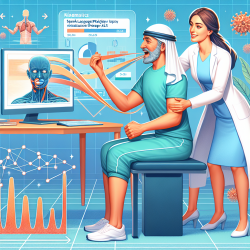Introduction
Amyotrophic lateral sclerosis (ALS) is a progressive neurological disease that severely impacts motor functions, including mastication. Impaired chewing can lead to malnutrition, choking, aspiration, and diminished quality of life. The study "Validation of Clinical Observations of Mastication in Persons with ALS" offers insights into the reliability and validity of clinical observations of mastication, providing a foundation for improving clinical practices.
Study Overview
The research aimed to assess the reliability and validity of clinician-based ratings of chewing performance in individuals with ALS compared to neuro-typical controls. Participants were observed chewing solid food while being recorded on video, with jaw kinematic data captured using a 3D optical motion capture system. Five experienced speech-language pathologists (SLPs) rated the spatial and temporal aspects of chewing, with kinematic data serving as the gold standard for validation.
Key Findings
- Temporal Aspects: Clinician ratings of the temporal aspects of chewing, such as the number of chewing cycles and sequence duration, demonstrated strong inter-rater reliability and validity. These measures are suitable for clinical application.
- Spatial and Spatiotemporal Aspects: Ratings of spatial aspects, like range of motion and consistency of chewing patterns, showed mixed reliability. The study found that these aspects are not as reliable or valid as temporal measures, suggesting a need for alternative assessment methods.
Implications for Practice
For practitioners, the study highlights the importance of focusing on temporal aspects of mastication when assessing ALS patients. Given the strong reliability and validity of these measures, clinicians can confidently use them as diagnostic indicators of chewing impairment. However, for spatial and spatiotemporal aspects, practitioners should consider integrating advanced technologies like 3D motion capture for more accurate assessments.
Future Directions
Further research is needed to refine the assessment protocols for temporal measures and to explore the integration of motion capture technology in clinical settings. This technology, already used in physical therapy and sports performance, offers a promising avenue for enhancing the precision of mastication assessments.
Conclusion
The study underscores the potential of data-driven approaches in speech-language pathology. By leveraging reliable and valid measures, practitioners can enhance their clinical assessments, ultimately improving outcomes for children and adults with ALS. To read the original research paper, please follow this link: Validation of Clinical Observations of Mastication in Persons with ALS.










